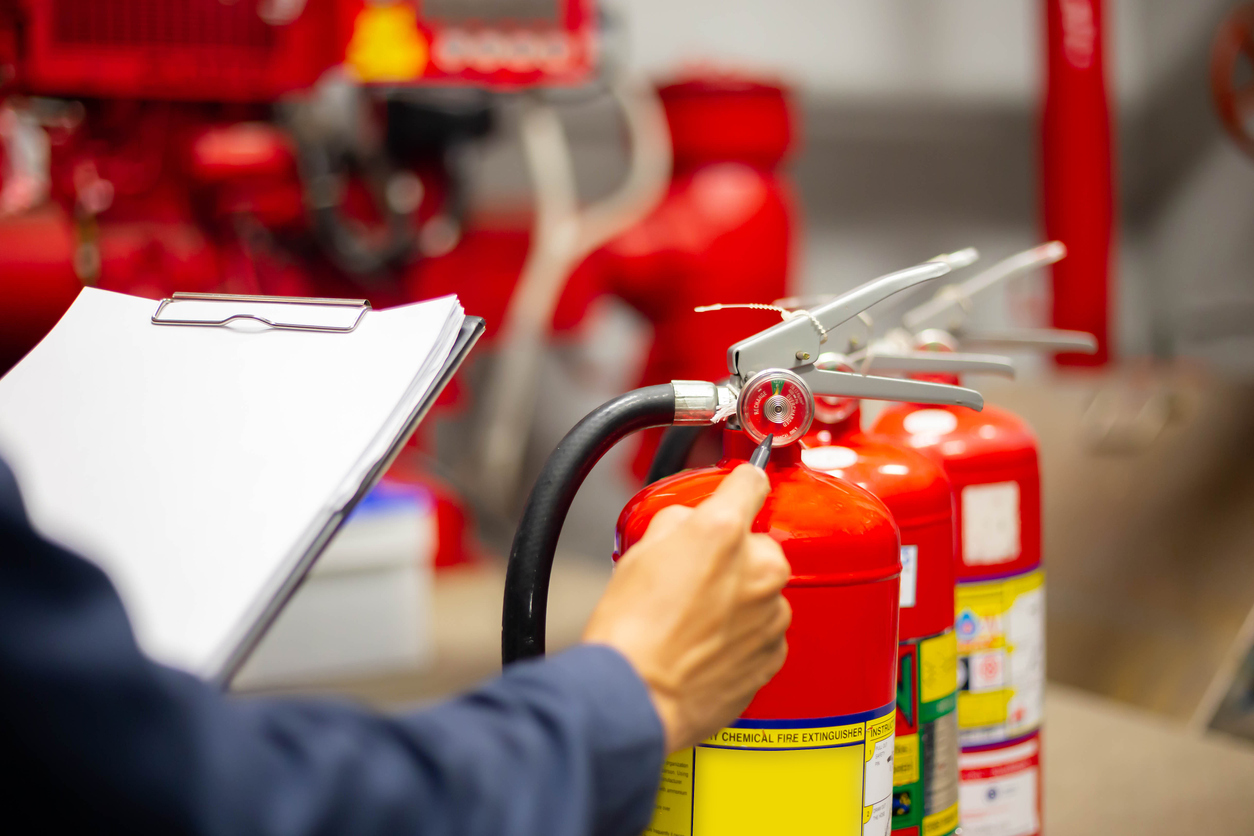One of the biggest risks to printing plants and smaller printing facilities is fire, which can spread rapidly in these environments thanks to the large volumes of paper and flammable liquids on-site.
Facilities that are most at risk are those that have high ceilings, large footprints and hold large quantities of paper inventory that is stored close together. Once a fire starts in that kind of setting, it’s difficult to suppress, putting the entire inventory at risk, as well as machinery, the building itself — and employees.
For a printer that’s spent hundreds of thousands of dollars — if not millions — on equipment, the risk is ever-present. That demands vigilance and taking steps to improve safety and fire prevention, which starts with understanding the main risks, including:
- Paper fires in infrared dryers and UV curing units.
- Explosions in dryers due to high blanket-wash solvent vapor levels.
- Static electricity discharged in flexographic and gravure printing processes ignites the ink, causing fire and/or explosion.
- Faulty machinery or power supplies.
It should be noted that nearly all forms of printing have some inherent fire danger.
<b>Flexograph printing.</b> This can be dangerous when low-flashpoint, alcohol-based inks are used.
<b>Gravure printing.</b> Fires can be started due to the use of flammable inks, combined with the speed of the presses that can generate heat and static electricity. These web-fed printers do have built-in safety precautions like static eliminators.
<b>Digital printing.</b> Instead of ink, modern digital printers use toners that come in two forms — dry or liquid, both of which are flammable.
<b>Screen printing.</b> The washing solvents used when cleaning the screens can be volatile and, because the inks have a high consistency, many printing operations will have drying ovens connected to the press. The hazards presented are associated with flammable vapors in the presence of hot surfaces.
<B>Fire prevention tips</b>
The Fire Prevention Association, an organization that works to reduce the risk of fire in workplaces, sets out the following tips in its report, “Recommendations for fire risk management in the printing industry”:
- Use non-combustible liquids, when possible. Despite efforts to replace flammable liquids in the printing industry, it’s currently not possible to eliminate them all.
- Ensure that your flammable liquids are stored in purpose-built stores, or in flammable liquid cabinets apart from materials that can easily catch fire.
- If you have high-value equipment, if practicable, separate it from other parts of the operation with fire-resistant construction.
- Store all paper (both pre-press and post-press) separately from the machinery, preferably in its own building. In the very least, it should be separate from the machinery with fire-resistant wall construction.
- Use industry best practices for storing pre-press paper, including appropriate spacing.
- If you are storing large volumes of paper, you should enhance your fire sprinkler coverage.
- Electrical wiring and equipment should be located outside the building in which the flammable liquids are being stored or handled.
- During production on a web press or other large printer, ensure there is sufficient ventilation to keep the concentration of the ink’s vapor below its lower explosive limit.
- Humidify the pressroom at between 40% and 60% to reduce the chances of ignition during production.
- Use static neutralizers like tinsel and grounded needlepoints on gravure printers.
- Ensure you have a fire alarm system and that the alarms are tested monthly.
- Conduct regular maintenance as recommended by the printer manufacturer, as well as regular inspections of all wiring, switches, moving parts and more for wear.
- All presses and paper-handling equipment should be electrically bonded and grounded using uninsulated wiring, which also makes inspections easier.
Some of the above recommendation can be costly, particularly if you don’t have the space or resources to pay for a new structure or building addition. If that’s the case, you should do your best to separate all of the machinery from stored liquids and paper.
<B>The takeaway</b>
In any printing operation, safety should be a top priority, and that includes fire prevention. Each year dozens of printers around the country go up in flames, often destroying a business the owner took years to build up.
While your insurance may cover the cost of rebuilding and replacing your equipment, it’s obviously preferable to prevent any fires from starting in the first place.
If you have not done so, to get the ball rolling, consider appointing a committee of key personnel to carry out a fire-risk assessment of your operation to identify any fire risks that may need mitigating. The committee should meet regularly to inspect the facility to ensure the workers are following all your safety guidelines.
To get more helpful articles for your print business delivered to your inbox, contact shannon@visualmediaalliance.org today!


